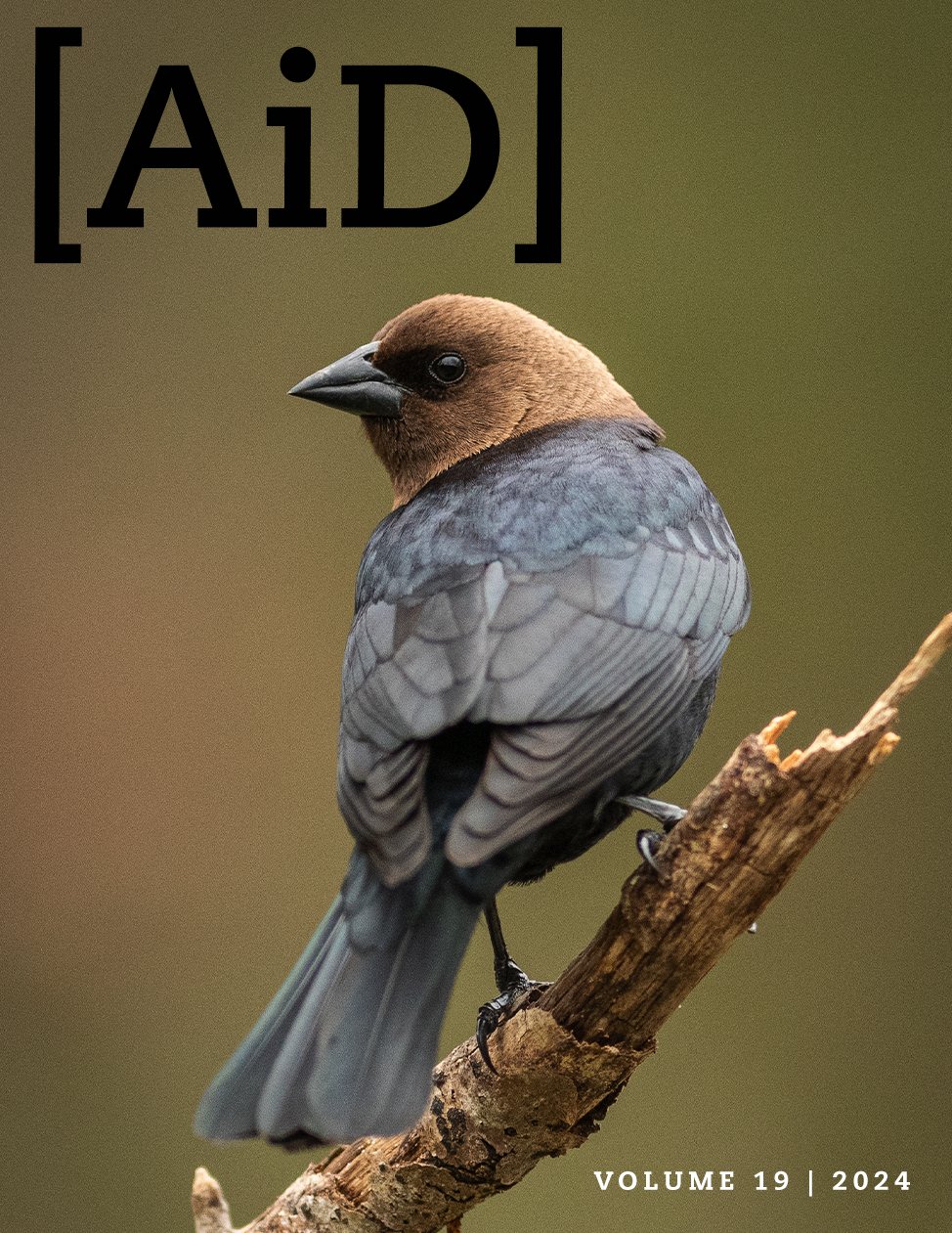
Variation and Adaptation in Guppies and Gambusia
Dashing Diversification in Live-Bearers: The Beauty of Guppies and Gambusia
Abstract
The guppy fish is considered by many to be a symbol of fertility, renewal, and growth. Gambusia are likely relatives of guppies and are known as mosquito fish because they largely prey on mosquito larvae. For a century, they have been used locally and globally in mosquito control. Guppies, Endler’s livebearers, and Gambusia are in the Poeciliidae family and freely interbreed in the wild. They are assumed to be in the same baramin or created kind. Their purpose in creation is often associated with harmony, balance, and abundance. It appears that the Poeciliidae family was designed with an array of genes, alleles, and traits for rapid diversification, adaptation, and survival in a variety of environments or niches. These were given by a Master Bioengineer who knew environments would change in a post-fall, post-flood world. Live-bearers (Guppies and Gambusia) change, adapt, and sometimes speciate, but they are still Poeciliid fish. The Master Craftsman would give a preload of diversity to help them accommodate whatever is needed, though they must still struggle for survival in a fallen world.
Keywords: Poeciliidae, Guppies, Gambusia, Endler’s livebearers, variation, adaptation, speciation, natural selection, guppy speciation
Introduction
Common guppies (Poecilia reticulata, Fig.1) and Endler’s livebearers (Poecilia wingei, Fig. 2) are added to both natural and artificial water bodies to control mosquitoes. It was Reverend Robert John Lechmere Guppy, a British-born naturalist, who discovered guppies while acting as a missionary in Trinidad in about 1866. American biologist Dr. John Endler discovered the aptly named Endler’s livebearers in Venezuela in 1975. Mosquito fish and guppies are derived from the same baramin (family Poeciliidae), both being small freshwater fish that are popular in aquariums along with being extremely adaptable fish that can survive in many different conditions. Although small, these fish are known to play an important role in the fight against malaria as they prey on mosquito larvae. However, while they share many of the same traits, they also have several unique differences. For example, Poecilia wingei and Poecilia reticulata express bright colors and are more sexually selective (females are attracted to bright colors when predation is low).
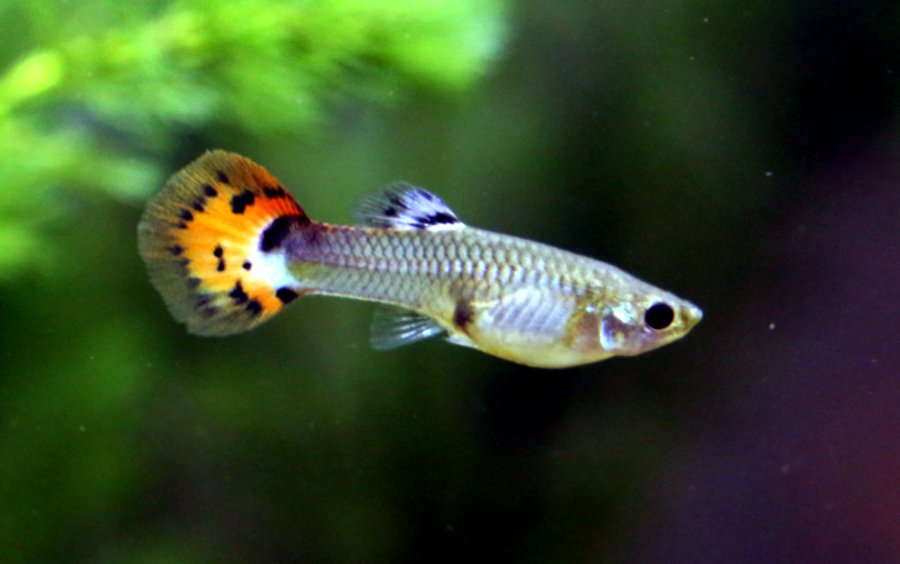
Fig. 1. Poecilia reticulata, the “Common Guppy” discovered by Reverend Robert John Lechmere Guppy in 1866. Image via Wikipedia Commons.
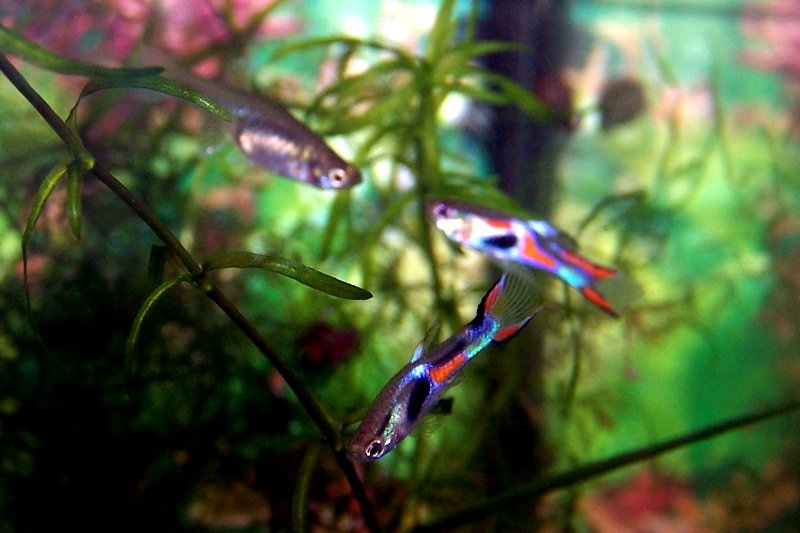
Fig. 2. Poecilia wingei, “Endler’s Livebearer” discovered by Dr. John Endler. Image via Wikimedia Commons.
The genus Gambusia comes from the Cuban term gambusino, which means “free-lance miner.” Gambusia holbrooki (Fig. 3) and G. affinis (Fig. 4) are called mosquito fish. Mosquito fish are guppy-like and may be placed in tanks, ponds, or small bodies of water. They can reproduce rapidly, in as few as 21 days. Like Endler’s guppies, they do not lay eggs. Instead, they bear live young and reproduce during the warm spring and summer months. Mosquito fish species are more widespread than the Poecilia genus due to their drab pigmentation, which allows them to blend in with the natural substrate (tan/silver) and the environment making them less vulnerable to predation. The females are significantly larger than the males at about 2 ½ inches long, while the males are about 1 ½ inches long. What makes Gambusia, common guppies, and Endler’s guppies important is their effect on any mosquito control program. They eat mosquitoes, midges, and other insect larvae as soon as they hatch from their eggs, thus reducing mosquito and fly populations. They also feed on plant materials. Altogether, their feeding habits help control vector-borne diseases, like malaria, dengue fever, yellow fever, West Nile Virus, Zika virus, and other mosquito-borne diseases. Perhaps God the Creator made them for this very purpose, to control insect populations after the fall. They have an intelligent design and purpose in creation, and some species, such as Poecilia wingei with their bright colors, are beautiful in appearance.
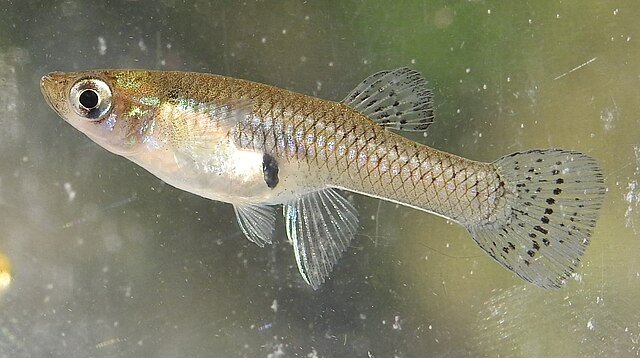
Fig. 3. Female Gambusia holbrooki, the Eastern Mosquitofish. Image via Wikipedia Commons.
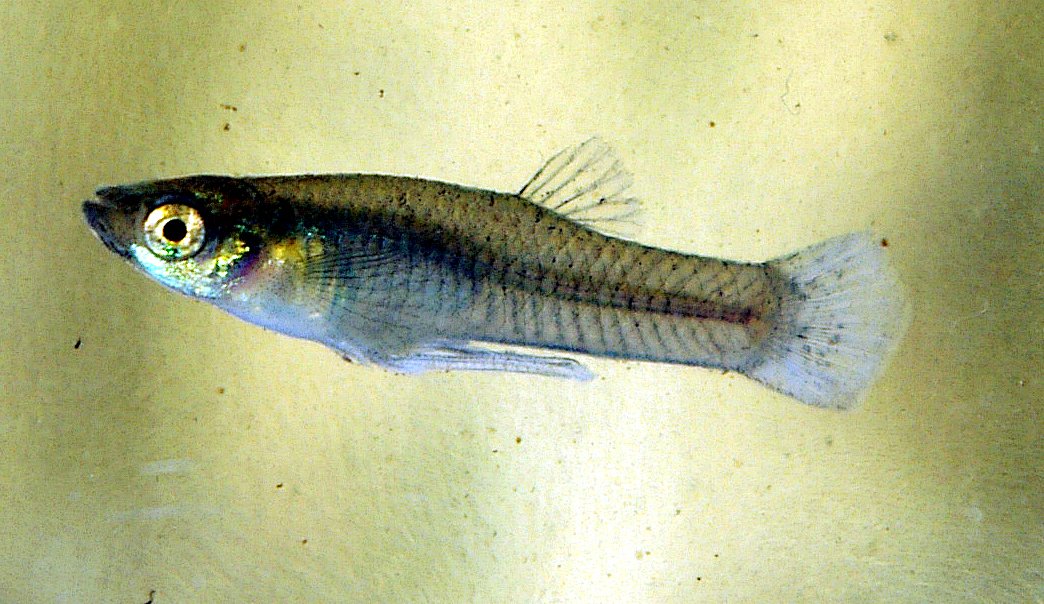
Fig. 4. Male Gambusia affinis, the Western Mosquitofish. Image via Wikipedia Commons.
Table 1. Fast Facts: The Created Design of the Poeciliid Fish Family
Genus Gambusia (Mosquito fish)
- Life cycle: This freshwater fish may live up to a year. Each female produces three to four broods during spring/summer: each brood results in 40 to 100 young.
- Habitat: Mosquito fish thrive in 33ºF to 100ºF weather! They use refuges (e.g., rocks/aquatic plants) to escape from predation by larger fish. They inhabit shallow waters and penetrate dense vegetation growth where larvae and pupae hide; hence, they are very efficient surface feeders and predators of mosquitoes. They can survive in a wide range of environmental conditions, such as temperature changes, organic pollution, and poor food supply.
- Diet: Each fish can eat up to 300 mosquito larvae daily. They are optimal foragers, also consuming midge and mayfly larvae.
Table 2. Fast Facts: The Created Design of the Poeciliid Fish Family
Genus Poecilia (Guppies, Endler’s Livebearers)
- Life cycle: Most live two to three years but may exceed this lifespan if conditions are favorable, giving birth to live young in three to five broods per year.
- Habitat: Guppies and live-bearers live in surface waters of ponds and lakes, making them a “topminnow,” helping to control mosquito populations. Water temperature seems to have a strong influence on the lifespan of Endler’s.
- Diet and Structure: Designed mouthparts to consume surface insects. They grow to a maximum size of about two inches in length.
Poeciliid Fish Rapidly Diversify
Poeciliid fish possess genes for rapid diversification and adaptation.
In a fully designed yet changing world, we can infer that these creatures’ needs were anticipated by a Master Engineer for adaptation. As computer programmers preload software with information and computer language for the expanding needs of electronic devices, so too a Masterful Mind has crafted DNA, genes, and other information for fish to undergo rapid diversification, adaptation, and even speciation within a kind. The Poeciliid kind has genes for color and beauty, as well as survival, in an ongoing “climate” change, whether that be a great flood or warming trends on the planet.
Trinidadian guppies, Poecilia reticulata, are excellent examples of adaptation. They live in steep mountain streams that flow across many waterfalls before reaching the ocean. These waterfalls act as important barriers, keeping predators out of certain parts of the stream. Guppies living above the waterfalls have few predators to contend with while guppies below the waterfall must stay vigilant to survive and reproduce (Fig. 5). Thus, guppies living in the same stream can experience very different challenges for survival. In previous experiments, there has been surprisingly speedy subspeciation, with new variants appearing in months or just a few years. This rate of adaptation is much faster than the predictions of evolutionary theory. Perhaps recognizing the role a Master Bioengineer played in designing this rapid adaptation during dramatic environmental changes is a better model to explain this phenomenon.

Fig. 5. Cascada del Vino, a waterfall in Venezuela that may be a habitat for guppies. Image via Wikimedia Commons.
An experiment that demonstrated rapid adaptation was conducted by Dr. John Endler, who noticed the wide range of coloring that the guppies possessed. Some had bright, vivid colors with large spots while others were drab and colorless, yet they were the same species. Endler devised an experiment to understand why the guppies had so much color variation. He moved the guppies from below the waterfall, where they suffered from high predation, to above the waterfall, where few predators resided. After only several months, he discovered that the guppies he had moved to the top of the waterfall now possessed very bright and vibrant colors that were notably different from the guppies below the waterfall. It appeared that when the guppies were not suffering from constant predation, they developed richer colors to reproduce more efficiently, no longer having to possess drab colors to hide from predators. Endler contributed to this study by showing how male guppy color patterns adapt as a trade-off between attracting mates and avoiding predators.
Yet another experiment demonstrating rapid adaptation was performed by David Reznick, a biologist from the University of California Riverside. Reznick utilized natural streams and artificial streams (mesocosms) in Trinidad (where the Reverend Robert John Lechmere Guppy discovered guppies) as “giant test tubes” to test adaptation theories. Like Endler, Reznick also moved guppies from areas below waterfalls to areas above waterfalls; however, his reasoning was different. In the stream below the waterfall lived pike cichlids, which solely prey on adult guppies but leave baby guppies alone; above the waterfall was the predatory killifish, which solely preyed on baby guppies but left the adults alone. Reznick was able to identify that within only 30–60 generations, about 11 years, the guppies could fully adapt to the predators in their new environment. This adaptation occurred at an unprecedented rate. The guppies living with pike cichlids began to rapidly have many babies while the guppies living with the killifish began to have fewer but larger babies. Within a short time, the guppies had adapted in completely opposite ways, breaking the Darwinian expectation of the length of time required for adaptation to occur.
Endler’s Ark—Dashing Diversification: Signature Bright Colors and Swordtails
Endler’s livebearers are the common guppy’s smaller, nano relative. Poecilia wingei gets its common name from Dr. John Endler, who rediscovered the species in Venezuela and introduced them into the pet trade. While they are smaller than most guppies, they typically possess brighter coloration and a double swordtail. Rapid diversification and hybridization are possible with traditional guppies and Gambusia. Juvenile Poecilia wingei are 30–60 days old and develop their coloration in the following 60–210 days. During this time, it is possible to differentiate them by gender.
One experiment tested the defining traits and characteristics of Endler’s guppies, detailing color pattern variation and the presence of double swordtails (Fig. 6). There are many variants of Endler’s guppy. One specific variant of Endler’s guppy is the “Cumana” guppy, named for its location in Venezuela. Cumana guppies have a bright orange coloration across their bodies with black and orange dorsal fins.
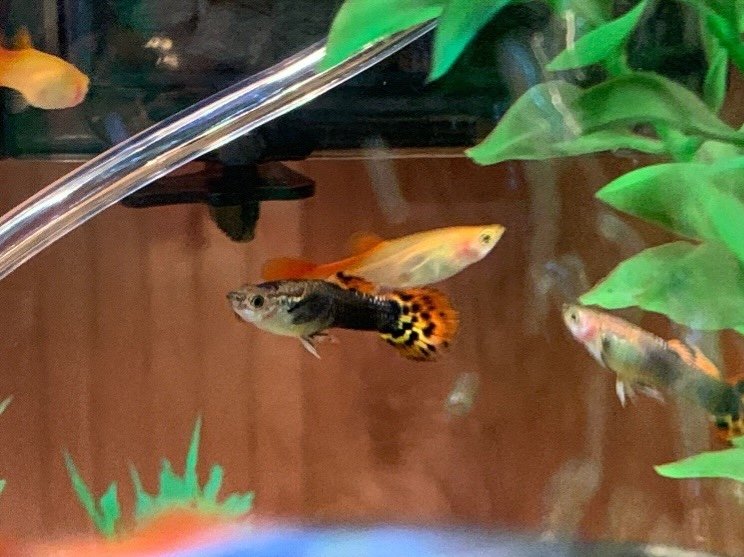
Fig. 6. Colorful variety of fancy guppies. Image by Alan Gillen.
Table 3. Poecilia wingei Traits
(Also known as Endler’s livebearers and “Cumana” guppies)
- Very Colorful (Dashing Florescent Orange, Greens, Red, Blue)
- Double swordtail
- Nano (very small males)
- Lively, energetic, highly active
- Eats mosquito and midge larvae, zooplankton
- Unique aesthetic with bright orange, blackspot in wild populations
- Variant of guppies
- Peaceful, harmonious
- Adaptive, resilient
- Hardy
- Sexual selection of brighter colors
Experimental data demonstrated that the sexual selection of Poecilia wingei is influenced by their coloration. Females prefer brightly colored males, though this coloration trait quickly disappears from the population when endangered by predators or if food shortages are limiting selection. Furthermore, they show optimal foraging behavior, preferring mosquito and midge larvae, but can rely on algae, plants, Daphnia, and other zooplankton when necessary. Poecilia wingei can also interbreed with wild-type guppies, Poecilia reticulata, and even Gambusia. Their traits and abilities are very distinct. As a result, their adaptive behavior does not appear to be from random mutations.
Speedy Speciation in Guppies for Mosquito Control
Perhaps the most important aspect of the Poecilid fish’s speedy speciation is that it has allowed them to diversify globally and act as mosquito control (Fig. 7). Mosquitoes and the health problems they cause are a major concern for people, particularly in warm weather climates, such as Virginia. The use of multiple mosquito-control strategies is the best way to combat the public health issues they cause. Native fish species that eat mosquito larvae, such as the eastern mosquito fish, are an additional tool to help alleviate mosquito-related issues. Furthermore, eastern mosquitofish (Gambusia holbrooki) and western mosquitofish (Gambusia affinis) are relatively easy to grow and maintain (Fig. 8). They are readily available from commercial farms and thrive within their natural, native environment. These species are used globally for mosquito control in private ponds, lakes, and smaller settings, but due to their invasiveness, they are not recommended to be released into larger wild watersheds. In the subtropical and tropical areas, common guppies and Endler’s guppies are utilized as they do not have the same negative environmental invasiveness as Gambusia; however, they are limited to warm areas of the earth.

Fig. 7. Mosquito larvae head viewed by microscopy; a desirable food for mosquitofish, guppies, and Endler’s livebearers. Image by Anna Collins.
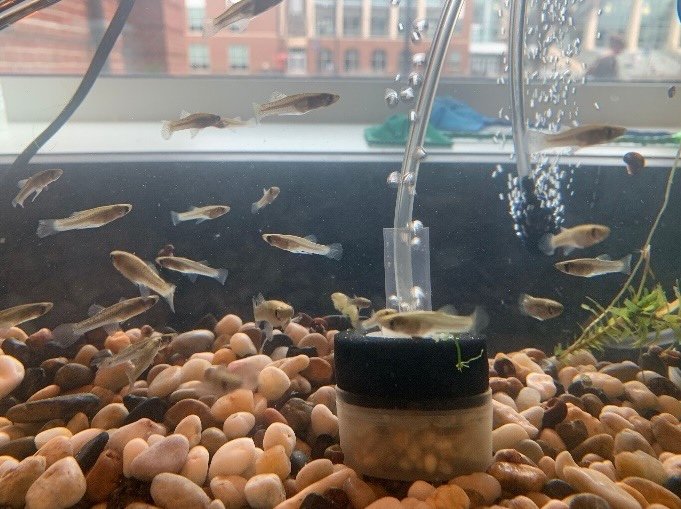
Fig. 8. Mosquitofish dwelling in an aquarium tank. Image by Alan Gillen.
Mosquito‐transmitted disease prevention is a global priority. Even in regions with low incidence of disease, biting mosquitoes are considered a nuisance, and both individuals and governments have taken action to prevent bites and control populations. The combined effects of climate change, urbanization, and water/waste management are credited with the proliferation of mosquito‐borne diseases in new regions. While chemical pesticides act as a main line of defense for mosquito control in tropical areas, there are warranted concerns over mosquitoes developing rapid drug resistance, along with the ecological impacts of pesticides. This leads to the consideration of other options such as Gambusia, Endler’s guppies, and common guppies. Experimental data shows we can utilize these fish to help combat this growing problem. And due to their prevalence in the aquarium trade, the feeding habits of guppy ecology are finally being recognized in mosquito control literature. With this, we can identify the specific phenotypes of guppies that are best used to consume mosquito larvae and maintain mosquito population control.
Ongoing Research
One study (Warbanski 2017) sought to find out how intraspecific variability in the guppy phenotype affects their importance as mosquito control and how habitat conditions may influence insect biomass and guppy feeding habits. Biologists tested two distinct guppy phenotypes: High Predation (HP) guppies and Low Predation (LP) guppies alongside fish‐free controls. After one month, they measured insect biomass in a defined experimental area and examined guppies’ digestive systems to document direct predation. While the original insect biomass was not significantly different across the three fish treatments, the study observed a significant reduction in mosquito biomass with the fish treatments compared to fish‐free controls, as well as intraspecific differences in feeding.
Another study (Reznik 2001) of the guppy diet in Trinidad rarely mentions the specific consumption of mosquitoes, either because they were absent from the experimental mesocosms or lumped with other flies (Diptera). However, other research still finds that Gambusia and guppies effectively reduce larval mosquito populations in artificial ponds and water storage containers. As research into the effectiveness of guppy and mosquitofish phenotypes progresses, greater advantages to their use as mosquito control may be discovered.
Ultimately, it is significant to note the role that conservationism plays in all this. Gambusia is generally considered invasive among the scientific community. Some biologists also consider guppies to be invasive, though this idea is generally uncommon. Therefore, one must be careful in how guppies and Gambusia are introduced and used in systems. In an ever-changing world, we want to be conservationists, but not extremists. We must carefully balance the use of these creations with the impact they have, i.e., as God’s stewards of creation, we need to be, as Dr. Gordon Wilson says, “a different shade of green.”
Summary and Conclusions
The fish we classify today as Poeciliids live-bearers are likely descendants of one baramin type. Today, there are over 300 known species in the Poeciliidae family, but only a few are commonly sold for home aquariums. The natural history of guppies is complicated with many hybrids in existence today, and without DNA testing, it is nearly impossible to identify the guppy’s species-mix with certainty.
The common guppy and Endler’s guppy are very popular options for new aquarists and fish breeders and are among the most diverse species in the trade. They possess a dashing array of tail lengths, shapes, and colors, with there being more than 55 common and rare types of guppies known. There is no accepted answer to the exact number of variants since it depends on how guppies with different traits are categorized. People who breed guppies often use different categorization criteria than researchers or conservationists. There are no hard rules for dividing guppies into groups based on their physical traits. Therefore, a common guppy, Endler’s guppy, and Gambusia could be legitimately categorized differently depending on who is making the list and what traits they are interested in.
While all Poeciliidae eat mosquitoes and other larvae, Gambusia does it most effectively as it has the widest temperature range. In their rapid adaptation, beauty, and work in mosquito control, they all show the glory to God.
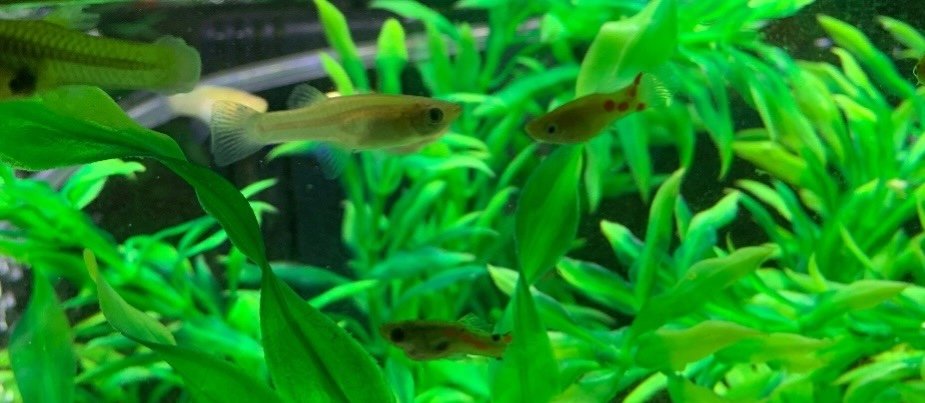
Fig. 9. Endler’s livebearers in an aquarium habitat. Another example of God’s work in a beautiful Creation. Image by Alan Gillen.
Gambusia and guppies are a brilliant design for mosquito control, given the right context. God the Creator has placed Gambusia, guppies, and other fish to control mosquitoes, midges, and other potential pests. The Master Bioengineer provided DNA diversity that allows for changes in response to the environment. Furthermore, he provided beauty for the guppies (Fig. 9). Endler’s guppies are “clothed” with bright colors as a testimony of his Majesty. Gambusia have incredible adaptations that have allowed them to thrive across 40% of the earth. Although every creature has its place on this good earth, a check-and-balance system was designed to keep things harmonious and to honor the Creator who made everything excellent!
References
Alexander, H. J., and F. Breden, 2004, “Sexual Isolation and Extreme Morphological Divergence in the Cumaná Guppy: A Possible Case of Incipient Speciation,” Journal of Evolutionary Biology 17, no. 6: 1238–1254, https://onlinelibrary.wiley.com/doi/full/10.1111/j.1420-9101.2004.00788.x.
Cassiano, E. J., et al., 2018, “Eastern Mosquitofish, Gambusia holbrooki, for Control of Mosquito Larvae,” IFAS Extension, University of Florida, 2018, no. 2: https://www.researchgate.net/publication/345844760_Eastern_Mosquitofish_Gambusia_holbrooki_for_Control_of_Mosquito_Larvae.
Clifford, J., 2023, “55 Types of Guppies: A Detailed Guide to Species, Tail Shapes and Colors,” Tankarium, last updated February 3, 2023, https://www.tankarium.com/types-of-guppies/.
“Endler,” Emeraldking-Aquatics Livebearers, March 25, 2024, https://www.emeraldking-aquatics.com/endler#:~:text=John%20Endler%20in%201975%20and,the%20scientific%20name%20Poecilia%20endler.
Evans, J. P., A. Pilastro, and I. Schlupp, 2011, Ecology and Evolution of Poeciliid Fishes, Chicago: University of Chicago Press.
Freshwater Aquarium Blog, n.d., “Care Guide for Endler’s Livebearers—The Guppy’s Little Cousin,” Aquarium Co-Op, accessed June 27, 2024, https://www.aquariumcoop.com/blogs/aquarium/endlers-livebearer-care-guide.
“Gambusia,” Wikipedia, last edited June 4, 2024, https://en.wikipedia.org/wiki/Gambusia.
Guppy Evolution, n.d., “The Science Behind Guppy Guppy Evolution,” Science, accessed June 27, 2024, http://www.guppyevolution.org/science/.
Reznick, D. N., M. J. Butler IV, and H. Rodd, 2001, “Life‐History Evolution in Guppies. VII. The Comparative Ecology of High‐ and Low‐Predation Environments,” The American Naturalist 157, no. 2 (February 2001): 12–26, https://www.journals.uchicago.edu/doi/abs/10.1086/318627.
Sanders, H. F., 2019, “Natural Selection in Guppies.” Answers in Genesis, October 15, 2019, https://answersingenesis.org/aquatic-animals/fish/natural-selection-in-guppies/.
Shelby County Health Department, TN, n.d., “Mosquito Fish for Ponds,” Public Health, accessed June 27, 2024, https://www.shelbytnhealth.com/487/mosquito-fish-for-ponds.
Warbanski, M. L. et al., 2017, “Implications of Guppy (Poecilia reticulata) Life‐History Phenotype for Mosquito Control,” Ecology and Evolution 7, no. 10 (May 2017): 3324–3334, https://www.ncbi.nlm.nih.gov/pmc/articles/PMC5433973/.
Wallus, R. et al, 2008, Reproductive Biology and Early Life History of Fishes in the Ohio River Drainage, Vol. 6, Chattanooga, TN: Tennesse Valley Authority.
Ward, H., 2022, “Mosquitofish vs Guppy: Key Differences Explained,” Fish, A-Z Animals, July 2, 2022, https://a-z-animals.com/blog/mosquitofish-vs-guppy-key-differences-explained/.
Answers in Depth
2024 Volume 19
Answers in Depth explores the biblical worldview in addressing modern scientific research, history, current events, popular media, theology, and much more.
Browse Volume
Answers in Genesis is an apologetics ministry, dedicated to helping Christians defend their faith and proclaim the good news of Jesus Christ.
- Customer Service 800.778.3390
- Available Monday–Friday | 9 AM–5 PM ET
- © 2025 Answers in Genesis

